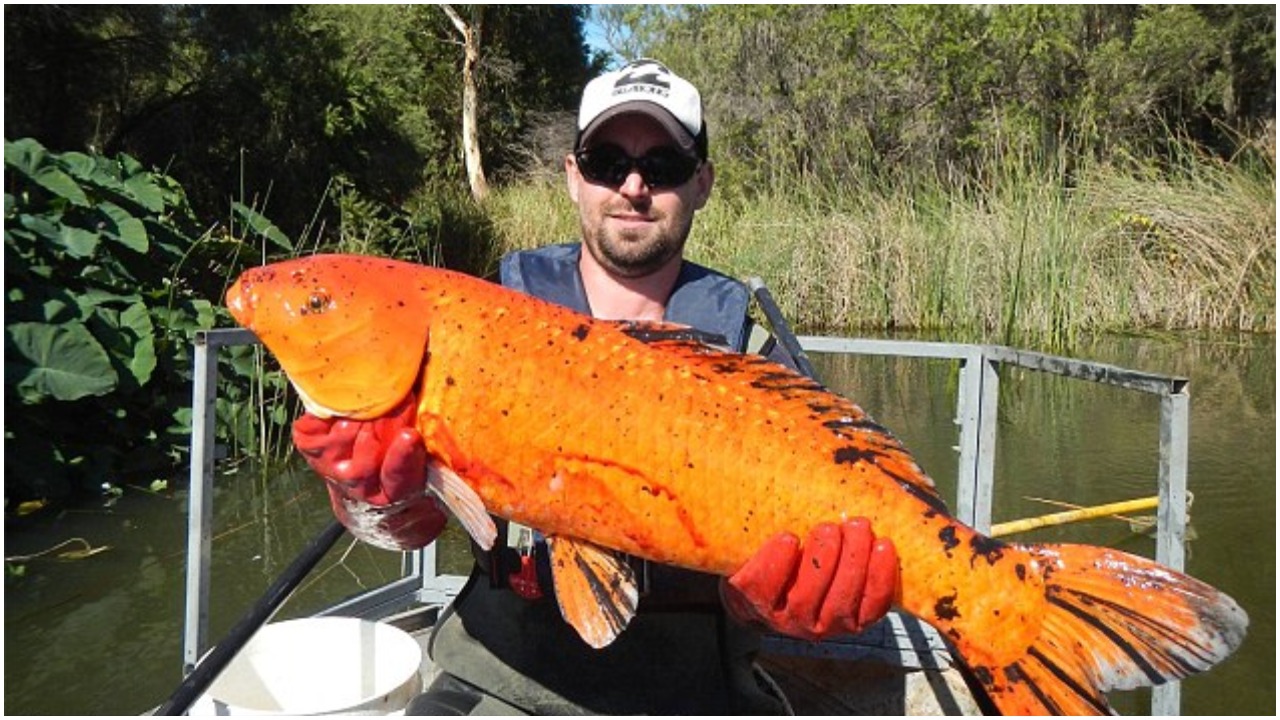What happens when you Free Willy your goldfish – becoming a big problem in waterways

When goldfish enthusiasts decide that their stuffy little aquarium is too cruel a place to contain their sparkly little friends, they often decide to dump them down the toilet or, more humanely, into a nearby stream.
While many owners believe that they are fulfilling a sort of moral obligation to nature, most are actually introducing a known invasive species into their local ecosystem and it can have devastating consequences.

Goldfish, or Carassius auratus, are members of the carp family. Their metallic, often golden-hued, scales make them popular as pets. They had been associated with good luck and fortune in antiquity but fell out of popularity when their populations started to grow.
Normally, with a quaint little aquarium and some rocks and fake weeds, they remain innocuous. But when they are introduced to a wild ecosystem that isn’t ready for them, they become a new thing entirely.

The New York Times reported giant goldfish growing to enormous sizes in various places across the US and Canada in the past several years, including Nevada, Colorado, and Alberta. These gargantuan goldfish thrive on the abundance of resources in a wild habitat, growing to sizes that would be impossible inside of an aquarium.
CTV News reported in June of 2018 that a British amateur fisherman named Lawrence Clarke caught a goldfish weighing 8.5 pounds. The catch tied with the existing record held in Britain for largest goldfish, which had stood for nearly two decades.

Jacob Hill of Environmentalscience.com asserts that since the local flora and fauna are unprepared for the goldfish, it has no natural predators, and other species are less adapted to competing with this new neighbor. Invasive species such as these can decimate local populations by disrupting the natural order.
Recordings of these creatures being found vary immensely. Reports from ABC News Australia show evidence of goldfish reaching up to 16 inches and weighing over four pounds. However, much larger specimens have also been reported.
In 2010, the Daily Mail claimed that French fisherman Raphael Biagini managed to reel in what he said was a 30 pound goldfish. However, it is likely that this fish was a large Koi Carp with a goldfish-like coloring.

Goldfish are often introduced into new ecosystems by families who owned them as pets or by importers unloading animals that they couldn’t sell. Other explanations include fishing vessels transporting catches or using them as live bait, according to Tanya Lewis of Scientific American.
Environmental scientist Sue Williams claims that people decide to dump their fish for a number of reasons. “Size and aggressiveness are the two main factors,” she says.
When asked how to curb the problem of invasive species, such as giant goldfish, she noted in a statement to Livescience that “It’s pretty simple: Don’t dump your fish.” Williams asserts it is much better to euthanize your unwanted aquarium fish rather than set them free.

There are lots of risks associated with invasive species. Invasive species of zebra mussel can accumulate toxins which get passed up the food-chain. Eventually, we end up ingesting these toxins through our food.
Other invasive species such as Caulerpa, a type of algae toxic to fish, are a greater risk because of aquaculture and associated activities. Caulerpa is listed as an invasive species by the US Plant Protection Act.
According to Pure Goldfish, goldfish are among the more aggressive species of pet fish. They tend to start bullying or attacking other fish that show signs of weakness.
This, obviously, exacerbates the problem of goldfish being introduced into the wild.
Organizations such as Murdoch University in Australia have set up programs to track expansion and migration of goldfish populations. In the meantime, we can all help the environment by discouraging the release of pet fish into rivers or streams.
